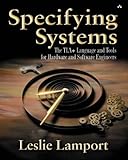Backhouse's less playful book covers the same topic, but has some more programming examples:
* cyclic code error correction * simple sorting algorithms * real number to integer conversion is used to introduce Galois connections
Again, this isn't a lot in terms of "practical examples". No production level software is built here. If you're looking for that sort of stuff, maybe you want to try out L. Lamport's book: http://www.amazon.com/Specifying-Systems-Language-Hardware-E...
I haven't read that book though.
In Coq, co-inductive types are used to model infinite objects like (never-ending) streams or (non-terminating) program executions.
Inductive List (A: Set): Set :=
| Nil: List A
| Cons : A -> List A -> List A.
CoInductive Stream (A: Set): Set :=
| SCons: A -> Stream A -> Stream A.
Fixpoint len {A: Set} (x: List A): nat :=
match x with
| Nil => 0
| Cons _ y => 1 + len y
end.
CoFixpoint ones : Stream nat :=
SCons nat 1 ones.
You can also use co-inductive types to embed the temporal logic of actions (TLA) in Coq; TLA is the language Leslie Lamport works with for "Specifying Systems".
* http://www.labri.fr/perso/casteran/RecTutorial.pdf
* http://www.amazon.com/Specifying-Systems-Language-Hardware-E...


[0] https://www.amazon.ca/Specifying-Systems-Language-Hardware-E...